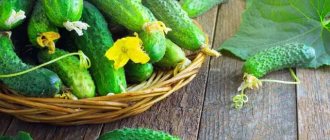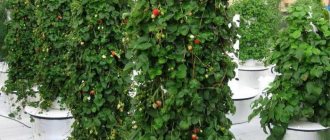The correct selection of varieties for forcing is crucial. The main characteristic that must be taken into account when choosing varieties for forcing by a certain date is the duration of the cooling period of the bulbs, necessary for the accumulation of physiologically active substances that determine the further growth and development of plants.
A relatively small number of early varieties are suitable for flowering by the New Year or in January, mainly from two groups - Simple Early and Triumph. Despite the fact that they have a minimum cooling period, during normal planting from October 1 to 5, there is not enough time for the cold period, so the bulbs are cooled for an additional month before planting at a temperature of +90C .
These same varieties and a number of others are suitable for forcing in February. The most reliable varieties for February distillation are red Abba, Leen van der Mark, Dow Jones, crimson Christmas Marvel, Zorro, pink Pink Impression, yellow Monte Carlo, Golden Apeldoorn, Moncella, purple Purple Prince.
The most diverse selection of varieties for forcing by March 8th is the majority of Darwin hybrids, Late Terry, Lily, Parrot, Fringed, and some Green-flowered. The February assortment is also suitable. It is not advisable to use varieties suitable for January forcing, since too long a cooling period will cause a decrease in the quality of the flowers. Among the best varieties are red Ad Rem, Princess Victoria, World's Favorite, white The Mounties, Cheers, yellow Strog Gold, Hamilton.
Based on the data given in the table compiled according to the International Bulb Center (Holland), you can select varieties for forcing at any time. It gives the minimum cooling time for the bulbs, but to improve the quality of cutting, it is necessary to increase this period by at least 2 weeks, or better yet, by a month. The cooling period for forcing by the New Year or in January should be at least 16 weeks, in February - 18 weeks, in March - 20-22 weeks.
Issues of distillation technology are discussed in the articles:
Varieties of tulips for forcing in pots
Forcing tulips from January to March
Forcing tulips. Techniques for accelerating flowering
Forcing tulips. Cutting and storage
Forcing tulips: Reasons for failure
Forcing tulips for the New Year: the best varieties and technology
In nature, tulips bloom only after undergoing winter cooling. A low temperature promotes the formation of physiologically active substances in the bulb, which affect the entire further process of development and flowering.
A necessary condition for forcing tulips is also the exposure of the bulb to low temperatures for 16-22 weeks, depending on the variety.
Varieties with a short cooling period of no more than 16 weeks are suitable for forcing for the New Year: Abra, Gander, Dix Favorite, Corona, Christmas Marvel, Lustige Witwe, Apricot Beauty and others.
The table below shows the characteristics of tulip varieties for forcing for the New Year using 9-degree technology.
Table “The best varieties of tulips for forcing for the New Year”:
| Variety name | Class | Flower color | Cooling period, weeks | Plant height, cm. | Time spent in the greenhouse, days | % of flowering plants |
| Abra | Triumph | Mahogany with yellow edge | 16 | 35 | 22 | 97 |
| Gander | Triumph | Bright magenta red | 14 | 46 | 29 | 95 |
| Dicks Favorite | Triumph | Bright red | 14 | 40 | 26 | 98 |
| Crown | Kaufman | Red with cream border | 14 | 25 | 21 | 100 |
| Christmas Marvel | Simple early | Purple pink | 14 | 35 | 25 | 85 |
| Lustige Witve | Triumph | Burgundy red with white border | 16 | 40 | 22 | 90 |
| Apricot Beauty | Simple early | Apricot-salmon | 15 | 37 | 24 | 90 |
The complexity of the technology for forcing tulips for the New Year is that by the time cooling begins (August 15), all parts of the flower, including the pistil, must be fully formed (the so-called stage G).
In the middle zone, the completion of this stage occurs in mid-August, and in cool and rainy weather it may be pushed back to the end of the month. To avoid errors, the beginning of cooling is determined by the completion of stage G with a longitudinal section of the control bulbs and their visual examination under a microscope or binocular magnification (magnification 30-40 times).
There are two ways to speed up the preparation of bulbs for cooling: agrotechnical and physical-thermal. According to the first method, tulips are grown under film. Flowers are not cut, but decapitated.
This agrotechnical technique speeds up the process of formation of all flower organs by 2-3 weeks and allows you to begin cooling at the scheduled time without the risk of getting a bouquet of “blind” buds for the New Year.
In the second method of preparing bulbs for flowering for the New Year, they are dug up earlier, as soon as the leaves begin to turn yellow, and the covering scales of the young bulb are juicy and white with yellow spots appearing.
Before forcing tulips for the New Year using this method, the bulbs are stored for a week at a temperature of + 34 °C. The meaning of this temperature effect is to accelerate the beginning of the formation of the flower primordium.
From August 15 until planting, prepared bulbs are stored dry in the lower compartment of a household refrigerator. Planting takes place no earlier than September 20, when the temperature in the cellar or basement drops to +9 °C.
Apricot Parrot
| Class | Plant height | Petal coloring | Cooling time (weeks) |
| Parrots | up to 70 cm | Apricot | 15-16 |
It seems as if in the bud of a tulip of this variety you can see all the shades of the sunset sky: the apricot rays are beautifully scattered across the seemingly ruffled petals. This unusual flower shape is a sign of the Parrot class. An interesting feature of “parrots” is that their petals can be of almost any shape, except the classic one: wavy, twisted, split, crumpled. “Apricot Parrot” will surely appeal to lovers of exotic things.
Popular varieties of tulips for forcing by March 8: photos, names and characteristics
Most varieties from the Darwin hybrid class are suitable for forcing by March 8: Ad Rem, Ivory Floradale, Apeldoorn, Apeldoorn Elite, Beat Chief, Vivex, Golden Apeldoorn, Diplomat, London, Oxford, Oxford Elite, Parade, Scarborough, Forgotten Dreams, Eric Hofsue and a number of others.
In the Triumph class, most varieties also give good results. Particularly easy to kick out are: Abra, Abu Hassan, Atraitnes Dele, Barcelona, Gavota, Guus Papendrecht, Kantor, Kis Nelis, Leo Visser, Lustige Witwe, WhiteDream and many others.
Of the other classes suitable for forcing tulips by March 8: Aladdin, Angelica, Aristocrat, Hamilton, Davenport, Dallas, Carmine Perrot, Liene, Marjolein, Monte Carlo, Picche, Purissima, Stockholm, Fabio, Fancy Frills, Fringeit Elegance, Etna and other.
The table below shows the characteristics of varieties for forcing by March 8 using 9-degree technology.
Table “The best varieties of tulips for forcing by March 8”:
| For the variety title | Class | Flower color | Cooling period, weeks | Plant height, cm. | Time spent in the greenhouse, days | % of flowering plants | |
| Abra | Triumph | Mahogany with yellow edge | 17 | 40 | 21 | 95 | |
| Abu Hassan | Triumph | Brown-red with golden-yellow border | 17 | 50 | 23 | 98 | |
| Hell Ram | Darwinian hybrids | Carmine with golden border | 20 | 54 | 21 | 99 | |
| Ivory Floradale | Darwinian hybrids | Ivory | 19 | 50 | 22 | 96 | |
| Aladdin | Lily Vetnye | Orange-red | 18 | 48 | 28 | 80 | |
| Angelica | Terry late | Soft pink | 16 | 43 | 18 | 99 | |
| Apeldoorn | Darwinian hybrids | Cherry red | 20 | 47 | 26 | 92 | |
| Apeldoorn Elite | Darwinian hybrids | Tangerine red | 20 | 50 | 20 | 91 | |
| Aristocrat | Simple late | Lilac-pink | 17 | 50 | 26 | 80 | |
| Atraytnes Dele | Triumph | Red with white border | 17 | 43 | 23 | 93 | |
| Barcelona | Triumph | Magenta purple | 18 | 60 | 24 | 96 | |
| Beat Chief | Darwinian hybrids | Creamy pink | 18 | 58 | 19 | 100 | |
| Burgundy Lace | fringed | Wine red | 20 | 60 | 28 | 90 | |
| Vivex | Darwinian hybrids | Tangerine red | 20 | 52 | 26 | 80 | |
| Gavotte | Triumph | Dark cherry with a bluish tinge | 17 | 48 | 23 | 98 | |
| Hamilton | fringed | Buttercup yellow | 18 | 65 | 25 | 100 | |
| Golden Apeldoorn | Darwinian hybrids | Golden yellow | 20 | 45 | 27 | 97 | |
| Gordon Cooper | Darwinian hybrids | Carmine pink | 18 | 65 | 20 | 100 | |
| Gu us Papendrecht | Triumph | Red with white border | 17 | 45 | 23 | 97 | |
| Davenport | fringed | Red, orange fringe | 18 | 51 | 24 | 100 | |
| Diploma mat | Darwinian hybrids | Carmine red | 20 | 41 | 30 | 90 | |
| Cantor | Triumph | Coral pink | 19 | 45 | 19 | 95 | |
| Carmine Perrott | Parrots | Carmine | 17 | 38 | 21 | 97 | |
| Kis Nelis | Triumph | Red with golden border | 17 | 45 | 29 | 90 | |
| Leo Visser | Triumph | Raspberry with white border | 16 | 50 | 18 | 98 | |
| Liene | Lily Vetnye | Pink | 18 | 48 | 24 | 99 | |
| Linvan der Mark | Triumph | Red with creamy white border | 17 | 40 | 21 | 96 | |
These photos show varieties of tulips for forcing, the names of which are given in the table:
Brigitta (Brigitta, Brigitte)
| Class | Plant height | Petal coloring | Cooling time (weeks) |
| Triumph | up to 50 cm | Yellow with red blush | 13-14 |
This variety belongs to the popular Triumph class. Typical features of Triumph representatives: a clear, goblet-shaped bud and a strong, tall peduncle. This variety is no exception. Brigitte's unusual coloring evokes the idea of a girlish blush: the petals resemble the blushing cheeks of a young, modest girl.
Effective technology for forcing tulips by March 8 (with video)
To force tulips by March 8, the bulbs are planted in boxes on October 1-5. In this case, before transferring the boxes on February 5-7 to a warm room, the bulbs are cooled for 18 weeks, which is quite enough for Darwin hybrids that have the specified cooling period, as well as varieties of other classes.
Darwin hybrids with a longer cooling period and late varieties of other classes are exposed to low temperatures earlier, placing them in the lower compartment of a household refrigerator on September 1-10 and planting them at the specified time.
To effectively force tulips by March 8, you can do without a refrigerator by planting the bulbs on October 1 and freezing them for several days at a low negative temperature, after which the boxes are removed to a permanent rooting site.
This technique reduces the cooling time by 1.5-2 weeks. You can reduce the cooling time by another 1.5-2 weeks if you soak the bulbs in a 0.5% gibberellin solution for 24 hours before planting.
A similar effect is achieved by watering tulip seedlings three times with a 0.1% concentration of gibberellin. Watering with a gibberellin solution not only speeds up the flowering time (shortens the cooling period), but also increases the height of the peduncle by 5-7 cm.
The step-by-step technology for forcing tulips by March 8 is demonstrated in this video:
Gander's Rhapsody
| Class | Plant height | Petal coloring | Cooling time (weeks) |
| Triumph | up to 50 cm | Soft pink | 13-14 |
Tulips of this variety tend to change color over time. At first, the deep pink bud has only light veins visible. Then the base of the petal becomes milky white, and a little higher are pink blotches resembling small splashes. Ganders Rhapsody is suitable for those who prefer restraint and at the same time sensuality.
Which tulips are suitable for forcing by April 1 and May 1
You can get beautiful flowers at other times that are unusual for these crops.
For forcing by April 1, the bulbs are not pre-cooled and are planted in boxes in mid-October. Also, bulbs for forcing by May 1 are not pre-cooled. Planting takes place in early November.
What varieties of tulips are suitable for forcing by April 1 and May 1?
For forcing by April 1, the following varieties are used: Abra, Ad Rem, Apeldoorn, Apeldoorn Elite, Aristocrat, Burgundy Lace, Vivex, Gordon Cooper, Daydream, Diplomat, Kantor, Kis Nelis, Lin van der Mark, London, Oxford, Oxford Elite, Parade, Fringeit Elegance, Eric Hofsu.
Popular varieties of tulips for forcing by May 1 are: Aristocrat, Diplomat, Zombie, London, Negrita, Oxford, Parade, Temple of Beauty.
Look at the photos of tulip varieties for forcing by April 1 and May 1:
Madison Garden
| Class | Plant height | Petal coloring | Cooling time (weeks) |
| Fringed | up to 50 cm | Raspberry pink with yellowish fringe | 16-17 |
This variety of tulips bears the name of the famous New York sports complex, which has become a venue for iconic sporting events and concerts of world-famous show business stars. Madison Garden tulips, at once graceful and solemn, with their unusual fringed petals resemble the artist’s bright stage costume. If you want a holiday in your soul, be sure to try growing these tulips!
How to drive out tulips: basic methods
There are two main methods of forcing. The so-called classic, when the bulbs are cooled at a temperature of +9 °C and the method, which has become widespread in Holland, and recently in other countries, when the bulbs are cooled at a temperature of +5 °C.
When forcing tulips using the 5-degree technology, the temperature is maintained with an accuracy of 0.5 °C, which is easily achieved in large flower farms that have the necessary equipment.
Among amateurs, the most common method of forcing is the 9-degree technology. With this method, tulips can be planted in boxes, pots or directly into the ground. Bulbs are planted in early October.
The planting density is 2.5-3 times higher than with conventional cultivation of tulips in the ground, i.e. 250-300 bulbs per 1 m2. With the onset of frost, the ridges are mulched with peat. From mid-January, a plastic film is stretched over a pre-prepared frame, and the greenhouse begins to be heated.
The snow is not removed, and it melts as temperatures rise. Melt water is a good stimulator for the growth of tulips.
A notable feature of this method is the freezing of the bulbs at a temperature close to zero or even below 0 ° C, and such freezing not only does not negatively affect the forcing process, but, on the contrary, has a beneficial effect and the tulips bloom together.
Despite its simplicity, this method can hardly be considered rational, because it requires a lot of heat. It is acceptable in regions with mild climates.
For the amateur gardener, of course, the method of forcing in boxes is more accessible and acceptable, since in this case it is easier to choose a room both for rooting and for subsequent forcing. For rooting, you can use a basement, cellar or some other room.
You can drive it out in a room, a warm barn, an insulated attic or garage, and even in a cellar under artificial lighting. With sufficient illumination and duration, the color saturation of the flower does not decrease, and in the Eric Hofsue variety it even increases.
How to store cut tulips before selling so that they do not open?
Preserving the marketability of tulips is one of the most difficult tasks for gardeners on the eve of International Women's Day. In order to preserve the integrity of flowers and keep the buds not completely open, there are several ways:
- Make an oblique cut of the plant stems, and a small vertical cut at the bottom
- Remove excess foliage
- Dilute several granules of potassium permanganate in the prepared storage liquid
- Drain the water and refill the flowers with new water daily. However, remember to only use cold liquid
- Also regularly renew the stems, cutting off the festering parts to avoid infecting other tulips.
- It is important to store containers with plants in a bright place, however, excluding exposure to ultraviolet rays
Storing cut tulips
You can also add the following drugs to water without potassium permanganate:
- Small amount of coal
- 3% sugar solution
- Specialized garden additives (“Flora” or “Bud”)
- 1 capsule of acetylsalicylic acid
- Vinegar solution (1 tbsp for 1 liter of liquid)
No less useful are the following supplements:
- Branch of any coniferous plant
- Ice cubes
- Snow
Cold liquid and room temperature no higher than +2°C will help prolong the life of flowers, stopping the process of premature opening of buds from 7 to 14 days, but in this case it is necessary to refuse lighting, since artificial and ultraviolet rays can speed up the flowering process of tulips.
Composition of soil for forcing tulips using 5- and 9-degree technology
Before you drive out the tulips, you need to prepare the right soil. As a substrate, you can use clean river sand, peat, sawdust, soil, perlite, but each of them has its own disadvantages.
Sawdust does not hold water well and requires frequent watering during the rooting period and subsequent cooling. In addition, sawdust, like peat, must be limed. The soil from the site becomes compacted during irrigation.
The most optimal soil composition for forcing tulips is: 2 parts turf or garden soil + 1 part river sand + 1 part completely decomposed manure or compost. The substrate is mixed and wood ash is added to it at the rate of 1 cup per standard forcing box.
A mandatory requirement for any substrate for proper forcing of tulips is its breathability and sterility. You cannot take soil from greenhouses, compost heaps, or from the garden, especially where tulips grew. If the substrate is infected, no treatment of the bulbs will help, and a significant part of the flowers will be destroyed.
Preparation of a complete substrate and the use of fertilizers during the forcing process undoubtedly increases the percentage of flowering plants and improves the decorative qualities of flowers. However, it should be remembered that the availability of adequate planting material is still crucial for successful forcing.
As planting material, use “extra” or first-harvest bulbs weighing at least 30 g for varieties of the Darwin hybrid class and at least 25 g for varieties of other classes.
You can use bulbs of the 2nd selection only of certain varieties, and it is not advisable to use bulbs of the 3rd selection at all, because The decorative qualities of flowers and flowering productivity are sharply reduced.
Before planting, the bulbs should be cleared of covering scales for two reasons:
- Firstly , the roots penetrate the substrate more easily, and the bulb takes root faster, while with dense covering scales, they begin to grow along the bulb, pushing it upward, which leads to a deterioration in the decorative qualities of the flower.
- Secondly , removing scales allows you to identify subtle signs of disease. Such bulbs should be pickled, after which they are planted for forcing. Planting material with strong signs of damage is rejected.
Selection of varieties
The range of tulips suitable for forcing is constantly expanding. Previously, only classic varieties were distilled.
Now almost any variety and species can be grown under artificial conditions. There are nuances when growing fringed varieties:
- Fabio. Red flower with yellow fringe, about 1 cm long.
- Honeymoon. The flower is pure white. The largest flowers have a fringed border of 7 mm or more.
- Starfighter. Red flower with a white fluffy border.
- Huys Ten Bosch. A large bud of delicate pink color is decorated with white fringe.
- Valery Gergiev. A glass of juicy red color. The flower is large with a fringe of about 1 cm.
- Lambada. The flower, an unusual peach color for tulips, is decorated with golden fringe. It is not very wide, but thanks to the interesting combination of colors, the tulip looks luxurious.
Mass forcing of tulips
These very showy varieties require longer chilling times. The forcing period is also increasing.
When treating with growth stimulants and throughout the entire growing period, it is necessary to maintain a constant temperature of the air and soil in the container.
Temperature fluctuations lead to stretching and weakening of the stems. The quality of flowers deteriorates.
There are more reliable types of tulips. They can be found in groups:
- Darwin hybrids
- Triumph
- Simple early
Tulips of the Triumph class or Russian giants for forcing are enjoying increased success. They are slightly inferior to the fringed and parrot varieties in terms of the showiness of their flowers.
By choosing reliable varieties, you can be sure of success. Triumph class:
- Garden Party. The flower is pure white with red longitudinal stripes of the usual characteristic shape.
- Beauty of Apeldorf. A juicy, cheerful orange color and delicate, slightly rounded petals distinguish this variety from other members of the family.
- Alexander Pushkin. The dark cherry flower is decorated with a white border around the edges. The shape of the flower is rounded, and looks more like a ball than a cone.
Class Russian giants:
- Ermak. A large bud on a powerful and durable stem of sunny yellow color.
- Pyotr Stolypin. Despite the large size of the flower, the pure and delicate white tulip seems airy.
- Catherine the Great. The rich pink flower gradually turns lighter at the edges.
- Soul of Russia. A huge glass of peach color with a slight blush.
The variegated flowers of the Parrot variety stand out as a separate class:
- Super Parrot. The white or milky flower with green streaks really looks like a disheveled parrot.
- Black Parrot. The burgundy petals are decorated with fringe at the ends and resemble the wings of a strange bird.
The choice of varieties is huge. To gain experience and decide on the best, you need to try growing different varieties from different classes. This is the only way to find out about the complexity or ease of cultivation.
Step-by-step instructions for forcing tulips: bulb storage mode
In accordance with the step-by-step instructions, the cycle of work on forcing tulips is divided into three stages:
- Storing bulbs after digging and before cooling begins.
- Rooting (at a temperature of +9 °C)
- Forcing (growing in a heated room).
The following is a step-by-step description of forcing tulips.
The storage regime for bulbs intended for forcing is somewhat different from the storage regime for planting material intended for planting directly in open ground. This is due to the need for preliminary preparation of the bulbs.
There are significant differences only in bulbs intended for early and late forcing. For bulbs selected for forcing by the beginning of March, the storage regime does not undergo significant changes.
After digging, which is carried out at the usual time, the bulbs are stored for a month (July) at a temperature of 21-23 ° C, then in August the temperature is maintained at 20 ° C, and in September it drops to 17 ° C.
Small temperature fluctuations do not have a significant effect. The indicated storage temperatures approximately correspond to average natural temperatures, i.e. planting material can be stored in an unheated room without special devices for maintaining and regulating a given regime.
However, with significant temperature fluctuations, product quality will decrease.
If forcing is carried out with pre-cooling, then the storage temperature from the beginning of September is reduced to +9 ° C, placing the bulbs in the lower compartment of the refrigerator. There they remain until the beginning of October, after which both chilled and non-chilled bulbs are planted in boxes with substrate. Further, the forcing technology in both cases is no different.
Preparing the bulbs
For successful forcing, tulip bulbs must go through a stratification procedure. There are two ways, which we will discuss below.
If you bought already prepared chilled bulbs, then after planting in pots and rooting they do not need to be in the refrigerator or basement - they are immediately placed in room conditions.
Option #1. Long-term cooling 100-130 days
To receive flowers by the desired date, you can calculate the required deadline in advance. How to carry out this stratification:
- The bulbs are sent to the basement or other room with a temperature of about +9 degrees. There should be no sharp fluctuations.
- Humidity in the room is about 75-80%. At the same time, condensation must not accumulate on the bulbs.
Option #2. Short cooling
For this purpose, a special refrigeration chamber is used. The temperature in it should be about +5 degrees. Stratification period is 45 days.
Without exposure to cold, growth and development of the aerial parts and the appearance of buds cannot be achieved.
How to force tulips: description of planting in boxes and rooting
It is convenient to use wooden or plastic boxes for forcing tulips. The size can be any. Depth - at least 10 cm, preferably a little more (12-14 cm). An indispensable requirement for wooden boxes is the presence of cracks measuring 4-5mm.
These slots are needed both to drain excess water and to improve aeration (air access) of the root system. When the distance between the planks is 1-2mm, they swell, drainage deteriorates sharply, and due to prolonged waterlogging during flowering, drooping of peduncles (topping) may be observed.
The height of the support posts of the boxes must be at least 20cm. During the cooling and rooting period, the boxes are placed in stacks, and high support posts protect the sprouts from damage.
To obtain high-quality cuttings when using the above substrates, it is necessary to have ideally prepared planting material grown in open ground on neutral soils with sufficient saturation with nitrogen, phosphorus, potassium and microelements.
If there is a lack of calcium in the soil, plants may lie down during forcing and are more susceptible to topping. Removing the flower head is mandatory. The selection of bulbs should be determined by the smallest diameter.
Often, amateur gardeners determine the analysis of bulbs by their largest diameter. In this case, the preparation of a complete substrate is of great importance for all subsequent distillation.
As studies conducted in the USSR, USA, Japan, England, Poland have shown, tulip bulbs, already in the process of rooting, even before the sprouts appear, begin to intensively absorb nutrients from the substrate and, above all, nitrogen.
The intensity of nitrogen absorption during the rooting period is even higher than during the growing season. If there is a lack of nitrogen in the uterine bulb and it is impossible to obtain it in the required quantity during the rooting and growing season, the flower stalks become bent and lie down.
Before planting tulips for forcing, the prepared mixture is poured into boxes in a 5cm layer, lightly compacted and the bulbs are laid out on it at a distance of 0.5cm from each other. Then the bulbs are covered with substrate or clean sand to the edge of the box. Having completed planting, the substrate is watered abundantly with a 0.2% solution of calcium nitrate (20 g per 10 liters of water).
After watering, add more substrate and cover the exposed tops of the bulbs. A small layer of substrate over the bulbs is absolutely necessary, because... with shallow planting, bulging of the bulbs during rooting is inevitable, but with proper planting this can be avoided.
After watering, the boxes are transferred to the basement or cellar and placed in stacks. Until mid-December, weekly watering and additional moistening of the walls and floor are required. At a temperature of +1...+9 °C, the bulbs take root and white roots appear through the cracks at the bottom of the boxes.
During the cooling process, the temperature gradually decreases to +2...+4 °C (at the end of December) and is maintained at this level until the boxes are transferred to a warm room.
Even a slight increase in temperature (by 3-4 °C) leads to a deterioration in the decorative qualities of flowers: they become smaller, the peduncle is shorter (the flower seems to be hidden in the leaves), the greenhouse period is lengthened, and the tips of the petals become discolored.
The greater or longer the increase, the greater the negative impact observed during the greenhouse period. Similar defects are observed when the cooling period is insufficient.
By the time the boxes are transferred to a warm room, the tulip sprouts reach 5-8 cm. At the final stage, maintaining the correct temperature and light conditions is crucial, as well as mandatory watering with a 0.2% solution of calcium nitrate during the initial period of active growing season (7-10 days after moving boxes into a heated room)
Planting tulips
To be able to see such variegated flowers in the spring, you need to plant tulips at the end of the summer season - from late August to mid-October. It is better to choose a sunny place. In partial shade, the stems of this plant will stretch out, and the buds will not be as large as those of those specimens that grew in an open place and received enough sunlight.
Fertile soil is preferable. If it is loose, but poor in chemical composition, then you need to add 2 tbsp. l. complex mineral fertilizer per 1 sq. m. of dug up earth and embed it into the soil with a rake. You can use nitrophoska or granular fertilizer for flowers in the same quantity. If you don't have enough fertilizer, then you can pour a few granules directly into the holes.
The holes can be dug using a special device for planting bulbs or a sharp spatula. The depth of the planting hole is equal to three times the height of the specific bulb. Place coarse sand in a 1.5 cm layer at the bottom of the excavation. If you put fertilizer there, mix it with sand.
Since tulip bulbs are deep, do not plant them in low-lying areas where water accumulates, otherwise they may rot.
Inspect your tulip bulbs before planting. If they are poorly preserved, dried out or rotten, it is better not to use them. If the damage is minor, soak the planting material in a solution of red potassium permanganate or a fungicide, for example, in a solution of the “Maxim” preparation. After planting, this place is mulched with peat.
The growing season of tulips begins in the spring. Then there is still a lot of water in the soil left over from melting snow. Therefore, tulips do not need watering. If there was little snow in the winter and the spring was dry, then you can water the flowers infrequently.
If you added enough mineral fertilizers when planting the bulbs, then the tulips do not need fertilizing. If they grow little green mass or form small buds, then feed them in the damp soil with a solution of complete mineral fertilizer.
After the tulips fade, do not cut off the green mass. It will help the bulbs form. When the stem and leaves turn yellow, then cut them off, leaving a “stump” 5 cm above the soil level to mark the place where the flowers were planted.
Then you will dig up the ripe bulbs, when the upper leaves turn yellow completely and the lower ones just begin, the peduncle becomes soft and easily separates from the bulb. And at the time indicated above, plant them again in the flower garden or in another place on the site.
But some species and varieties do not require annual digging. We'll talk about this in more detail below.
Forcing tulips: temperature and watering
When moving boxes to a warm room, the temperature should be within 12 ° C, the lighting should not be turned on. Liquid fertilizing is carried out with a complete mineral fertilizer with microelements and the addition of calcium nitrate, especially if the quality of the material used is insufficient.
The second liquid feeding with the same composition is carried out after 7-10 days. The use of fertilizers is mandatory if flowers are cut above the bottom leaf in order to obtain bulbs and large flowers for subsequent growing in the ground. If the sprouts are small (3-4cm), then they are shaded with dark material without touching the sprouts.
Every day for 1-1.5 hours the shading is removed and the room is ventilated. In 2-3 days the sprouts grow to 6-8 cm and the shading is removed. 3 days after transferring the boxes, the temperature is raised to 18 °C during the day and 14-15 °C at night, and full lighting is provided.
Let's allow a short-term rise in temperature to 20°. A further increase accelerates the flowering of tulips, but can lead to drooping flower stalks and the appearance of “blind” buds.
There are indications in domestic literature that tulips do not require lighting. This is only true when forcing is carried out in a glass greenhouse. If forcing is carried out indoors (house, basement, attic, garage, etc.), then lighting is required and at least 80 watts per square meter when using “daylight” lamps.
The use of these lamps for amateurs is preferable, because... they consume less energy and provide more uniform illumination. The duration of lighting is gradually increased to 15-17 hours a day. With sufficient brightness of lighting, the leaves acquire a rich green or bluish-green color, and the flower stalks do not bend or lie down.
When the buds begin to color, the temperature should be reduced to 14-15 °C. At the same time, the flowering period increases, the flower becomes large, and the flowering stem is strong and tall. By lowering the temperature during the period of coloring of buds or even slightly earlier, it is possible to bring plants to flowering on time.
Forcing at a temperature of 15-16 °C slightly delays the flowering period (a decrease in temperature by 1 °C extends the greenhouse period by 1-1.5 days), but practically no cases of drooping flower stalks are observed.
Watering tulips during forcing is done daily with cold water (8-12 °C), preferably melted water, because it contains a minimum amount of salts and acids. The mandatory use of calcium nitrate during irrigation promotes the formation of strong peduncles, highly decorative flowers and increases flowering productivity.
Hamilton
| Class | Plant height | Petal coloring | Cooling time (weeks) |
| Fringed | up to 80 cm | Bright yellow | 16-17 |
Yellow tulips are by no means harbingers of separation. The sunny color affects a person extremely favorably: it is the color of optimism, energy, and love of life. The variety of this fringed tulip is named after Lady Hamilton, a scandalous beauty who lived in Great Britain in the 18th-19th centuries. Bright buds with fringed petals look impressive and never go unnoticed, like the famous British one.
Cutting and storing tulips after forcing (with photos and videos)
Flowers are cut at the base of the stem in the morning before watering or in the evening and wrapped in paper so that when immersed in water it does not get wet. In cold water, cut flowers are kept for 24 hours at a temperature of +8 °C. It is even better to use a 0.1% solution of calcium nitrate. Then the stems gain strength, and cut flowers last longer.
These photos demonstrate the stages of forcing tulips:
However, it may happen that the flowers bloom earlier than expected. In this case, there are several ways to save them. As soon as the bud is colored, but the flower has not opened, cut it. Cut flowers are placed in water with snow and stored in the dark at a temperature of +2 °C. Flowers with this method can be stored for 1.5-2 weeks.
Detailed instructions for forcing tulips are presented in this video:
With the dry storage method, cut flowers, pre-wrapped in paper and placed in the refrigerator at a temperature of +2 ... + 3 ° C, can be kept in it for up to two weeks. Before sale, the cut is renewed by 1 cm, and the flowers are placed in water.
After 30 minutes, the turgor of the flower and the entire plant is restored. It is unacceptable to store flowers in the refrigerator along with vegetables and fruits. They emit ethylene, which accelerates the aging of flowers.
In the final section of the article, you will learn what to do with tulip bulbs after forcing.
Blue Heron
| Class | Plant height | Petal coloring | Cooling time (weeks) |
| Fringed | up to 60 cm | Lilac-violet | 18-19 |
Representatives of the Fringed class have many fans. This is not surprising, because the petals, edged with fringe, look as if dusted with frost. The shape of the petals of the Blue Heron tulip evokes associations with the silhouette of a heron (in addition, “blue heron” is the literal translation of the name of this variety). The shade goes from dark lilac at the base of the bud to light lilac at the edges of the petals.
Description of the flower, photo
Tulips come from the lily family. In addition to them, this family includes: lilies, muscari, hyacinths, fritillaria, etc. A characteristic feature of these flowers is the presence of six petals (hybrid varieties have more petals) and six stamens with elongated anthers. Most often, one plant produces one bud; in some species, several buds are possible on the stem.
The shape of the petals can be oval, semicircular, pointed with fringed or corrugated edges. Flower sizes can vary from small, just a few centimeters, to huge ones, about 20 cm.
The color palette is very diverse, it includes all existing paints, tones and halftones. Thanks to the painstaking work of breeders, new types of tulips appear every year.
The stem of the flower is erect, cylindrical in shape. Its height depends on the type and variety of flower: 10-20 cm or 60-100 cm.
Leaf plates of tulips are formed from 1-12 pieces; they are very important for the formation of the bulb for the next year. If they are lost during the growing season, the flower may die.
Tulips are bulbous flowers. The bulb is a bottom with scales, which are covered on top with protective scales, which perform a protective function. The life cycle of the bulb is about 24 months, after which it dies and forms daughter bulbs.
Preparing soil and containers for planting
Tulip growth stages
There are some rules for growing tulips at home:
Maintaining a constant temperature. This condition must be observed at different stages of cultivation. Changes and fluctuations have a bad effect on the condition of the flower.
Additional lighting after sprouts appear. The source of additional lighting can be either a special phytolamp or a regular fluorescent lamp.
The forcing container should be deep, but not very wide. The ratio of the diameter of the pot to its height is 3:5. This is necessary for root development. A well-formed root system will subsequently produce a large and beautiful flower.
Loose, moisture-permeable soil. Soil mixture for forcing tulips can be purchased ready-made at garden centers. You can take simple soil for coniferous plants. You can increase the nutritional value of this mixture by adding compost or vermicompost to it.
Tulips blooming
Cooking it yourself will take some time. To do this, you need to mix garden soil, sand, peat and humus in a ratio of 1:1:2:2.
Instead of sand, you can use vermiculite to loosen the soil. This will improve the quality of the soil mixture and retain moisture. The soil should not be too oily.
Drainage. At the bottom of the planting container or box, it is necessary to pour a layer of drainage of at least 5 cm.
For drainage, it is better to use fine expanded clay, coarse sand, pieces of coal, and fine gravel.
Maintaining constant soil and air moisture. You can’t overwater a flower, but it’s also dangerous to overdry the earthen ball. Watering is done with settled water at room temperature once every two days.
Compliance with these rules is the second half of success. Patience and desire will definitely lead to a result that will stun the gardener and brighten up the gray winter days.
Noticed a mistake? Select it and press Ctrl+Enter to let us know.
Tulips
It is impossible to list the varieties of tulips, there is an incredible variety of them - late double, fringed, low-growing, peony, Dutch, for forcing and growing in a greenhouse - each of them will delight with its flowering if you provide the plant with proper care...











